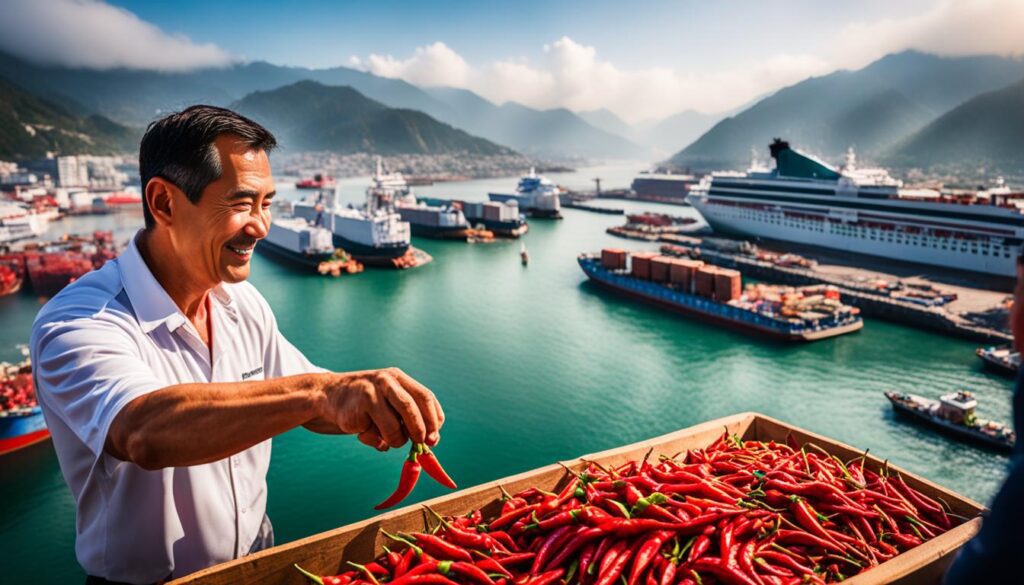Explore the impact of the “War;Habanero” on global spice trade and how conflict influences the market for spicy food commodities.
War
War;Habanero Impact on Global Spice Trade
Do you remember the excitement of pulling a lever and watching those symbols spin? Slot machines have been entertaining us for years. They mix chance with excitement. Whether you play often or just for fun, slots games draw you in. You’ll find yourself wanting to play more.
Slots games started simple and have changed a lot. Now, in the digital world, they offer amazing sights, great stories, and cool bonuses. Just by clicking, you can feel like you’re in far-off places, having great adventures, or in magical lands.
Delve into the world of slots games
Imagine going back to the time when the War;Habanero shaped the spice trade. This big conflict changed food around the world. Slots games hope to change how you see games. They offer many themes, letting you visit various worlds and times from your home.
Key Takeaways:
- Slots games offer an immersive experience that combines chance and excitement.
- Modern slots games feature stunning visuals, captivating storylines, and enticing bonus features.
- Choose from a variety of themes, including historical events like the War;Habanero.
- Transport yourself to different worlds, time periods, and cultures through the power of slots games.
- Get ready to embark on a thrilling adventure and experience the thrill of hitting the jackpot!
The Impact on Jamaican Cuisine
Jamaican food uses a lot of chile peppers, especially the famous Scotch bonnet. This pepper is well-known for its strong heat and unique taste. It’s a key part of Jamaican dishes and represents their cooking style.
Jerk chicken is a top Jamaican dish that shows off the Scotch bonnet’s spicy taste. To make this dish, you marinate chicken in spices like the Scotch bonnet pepper, scallions, thyme, and allspice. This creates a spicy and flavorful meal that’s emblematic of Jamaican food.
The Scotch bonnet is used in more than just jerk chicken. It’s also in dishes like rice and peas, adding warmth and complexity. Another dish, escovitch fish, uses the pepper for a spicy kick with pickled vegetables. Overall, the Scotch bonnet helps make Jamaican food taste authentic and delicious.
Yet, there are issues with growing Scotch bonnet peppers in Jamaica. Plant diseases and pests harm the crops, making it hard for farmers to grow enough. This has made Scotch bonnet peppers more expensive and harder to find. So, getting the true taste of Jamaican food has become a bit more challenging.
Jamaican Cuisine Staples
Besides the Scotch bonnet, Jamaican food includes other key ingredients and dishes. Some top examples are:
- Curry Goat: A tasty goat meat curry with rice and peas is a favorite.
- Ackee and Saltfish: It’s the national dish, mixing ackee fruit with salted fish.
- Oxtail: This stew is rich and hearty, cooked with oxtail, veggies, and spices.
- Callaloo: A healthy green leaf cooked with coconut milk, often served as a side.
Jamaican food combines African, European, and Asian tastes. The Scotch bonnet pepper is a big part of these flavors. Even with the challenges, Jamaican food’s bold and hot flavors are loved worldwide.
Chilies’ Journey to Asia
Chilies have a captivating story, crossing oceans and mingling with different cultures. Their arrival in Asia changed the way food was seasoned. It also impacted the spice trade in a big way.
Their journey began in the Americas, where they were found wild and farmed widely. When Columbus reached these lands, he saw the value in these hot fruits. He took them back to Europe on his voyages.
In Asia, the Portuguese were the first to bring chilies. They entered through Goa, India, adding a fiery twist to local and later, far-reaching, cuisines. Soon, chilies were being used in recipes in places like Thailand, China, and Korea.
Once in Asia, chilies meshed well with the existing seasonings. They became a staple in many regional dishes, bringing heat and a new layer of flavor. The use of chilies expanded the flavor horizons of traditional meals.
Examples of this include South Indian and Thai cuisines. South Indian food is known for its heat, with popular dishes like vindaloo and various curries. In Thailand, chilies are at the heart of vibrant meals, such as in Tom Yum soup and Green Curry.
“Chilies have become a key aspect of Asian tastes, adding a spicy touch,” says Chef Rahul Kapoor, an expert in Asian cuisine.
But, it’s interesting that not all Asian countries embraced chilies. Japanese cooking, for instance, developed differently. They found their unique tastes in ingredients like soy sauce and miso, not relying much on chilies.
To understand more about chilies in Asian cooking, let’s look at a comparison table:
| Cuisine | Spiciness Level | Key Dishes |
|---|---|---|
| South Indian | High | Chicken Vindaloo, Chettinad Curry |
| Thai | High | Tom Yum Soup, Green Curry |
| Chinese | Varied (from mild to spicy) | Kung Pao Chicken, Mapo Tofu |
| Korean | Medium | Kimchi, Bulgogi |
The table highlights how chilies are used differently across Asian cuisines. It shows that each has its own spice level and unique dishes.

The journey of chilies to Asia forever changed its culinary world. In places like Bangkok and Seoul, chilies are at the heart of cooking, providing spiciness and adventure in every bite. They’ve made Asian food stand out for its bold, flavorful meals.
The Spice Trade in the East Indies
The Spice Islands, known as the Moluccas, were key sources of spices such as cloves and nutmeg. At first, Arab traders ruled the spice trade in the East Indies. They sailed from the Red Sea to India, creating a profitable path.
Then, the Portuguese wanted in on the action. They aimed at controlling this rich trade and did so by dominating Goa, India. They took over the spice routes as part of their plan.
The Portuguese control didn’t last long. The Dutch soon took over. They established the Dutch East India Company, entering the spice trade with power. This move gave the Dutch full control of the trade, including the sought-after spices from the Spice Islands.
The Dutch had a long time in charge of the Spice Islands. They made a lot of money by monopolizing the trade of cloves, nutmeg, and other spices. Their control let them set high prices for these precious goods.
However, the Dutch rule in the East Indies ended. The Japanese took over the Dutch East Indies during World War II in 1942. This event marked the stop of the Dutch monopoly on spices.

Trade Flow in the East Indies
Let’s look deeper into the spice trade in the East Indies. We’ll see how goods moved and who the main players were:
| Trade Flow | Key Players |
|---|---|
| Arab traders sailing from the Red Sea | Early dominance in the spice trade |
| Portuguese traders | Established themselves in Goa, India |
| Dutch traders | Formed the Dutch East India Company and gained control |
| Japanese occupation | Ended Dutch monopoly on the spice trade |
Conclusion
In conclusion, the War;Habanero changed the global spice trade a lot. Chilies like the habanero and Scotch bonnet are now key in dishes worldwide. They bring both heat and flavor to meals in places like Jamaica and Asia.
Adding chilies to foods has shifted the spice trade’s dynamics. It sparked competition among powerful nations. Yet, chilies made their way into dishes worldwide, becoming essential.
The War;Habanero’s impact on the market for spicy foods is still strong. Chilies are now critical in many cuisines globally. So, the global spice trade has been deeply affected, integrating chilies into different cooking traditions.
FAQ
How has the War;Habanero impacted the global spice trade?
The War;Habanero changed the global spice trade a lot. It brought chilies, like the habanero, into cuisines worldwide. Now, they lead the market for hot food items.
What is the significance of chilies in Jamaican cuisine?
Chilies, mainly the Scotch bonnet pepper, are key in Jamaican food. They add intense heat and flavor to meals. You’ll find them in dishes such as jerk chicken and rice and peas.
How did chilies spread to Asia?
Originally from the Americas, chilies journeyed to Asia with Portuguese explorers. They first landed in Goa, India. From there, chilies made their way to places like Thailand, China, and Korea. These regions welcomed chilies because they matched well with local flavors.
Who controlled the spice trade in the East Indies?
In the East Indies, Arab traders were the first to lead the spice trade. But, soon the Portuguese claimed control from their base in Goa, India. They were followed by the Dutch, whose Dutch East Indies Company monopolized the spice commerce.
What is the conclusion of the War;Habanero’s impact on the spice trade?
The War;Habanero’s influence remains strong in the spice trade. Chilies, like the habanero and Scotch bonnet, are now essential in many cuisines. Even with hurdles, the market for hot spices continues to feel the War;Habanero’s effects.





















